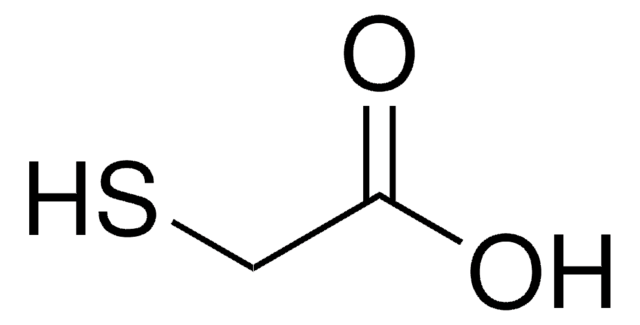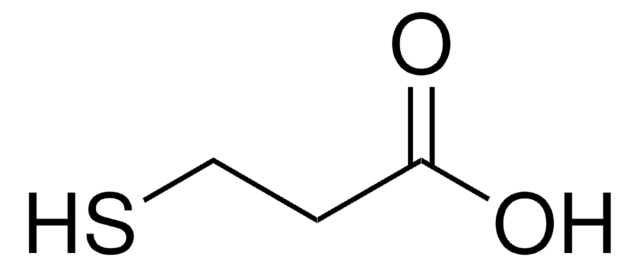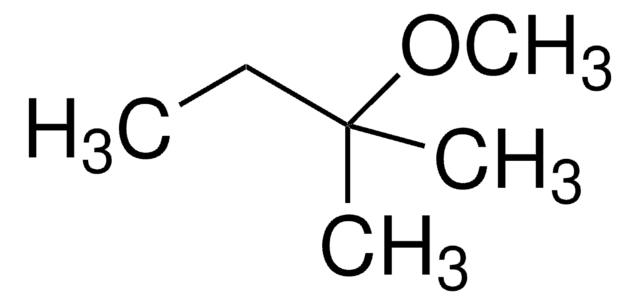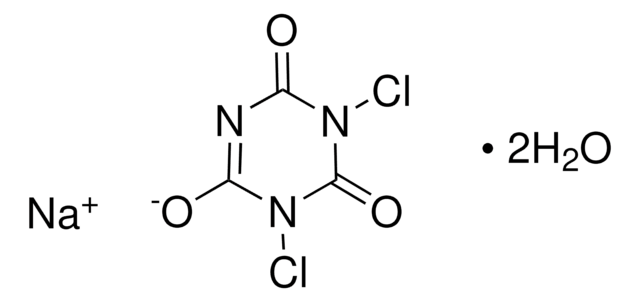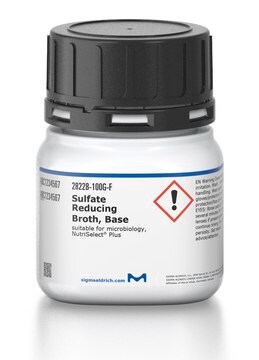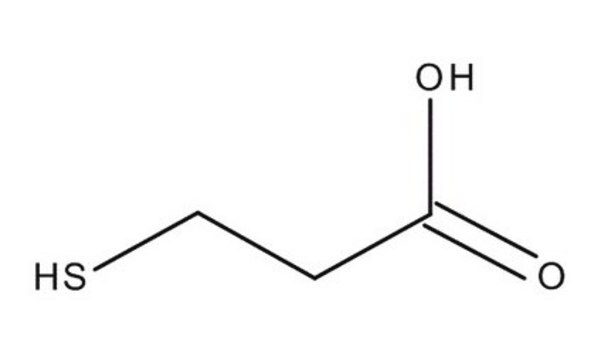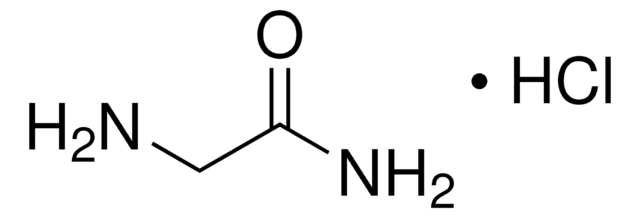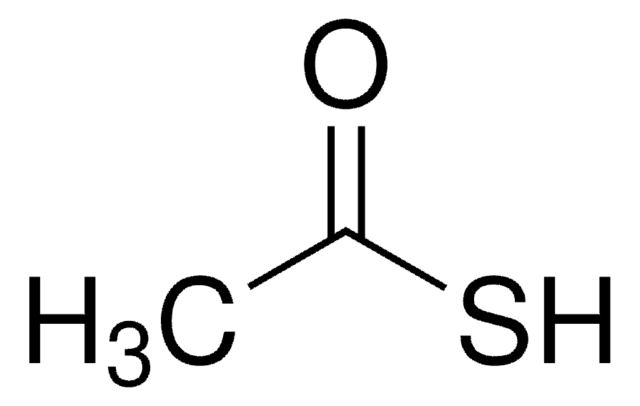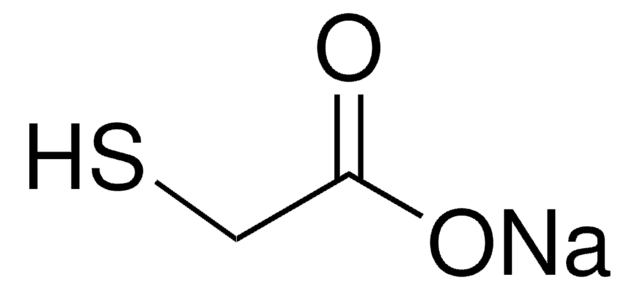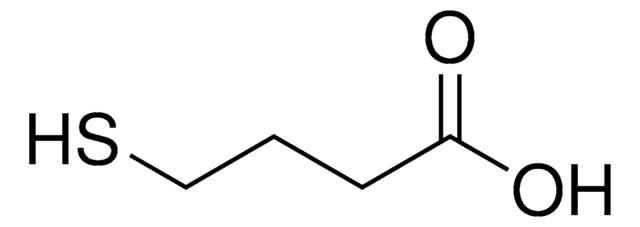8.22336
Thioglycolic acid
for synthesis
Sinonimo/i:
Thioglycolic acid, Mercaptoacetic acid, 2-Mercaptoethanoic acid
About This Item
Prodotti consigliati
Tensione di vapore
0.1 hPa ( 20 °C)
Livello qualitativo
Stato
liquid
Potenza
73 mg/kg LD50, oral (Rat)
pH
1 (20 °C in H2O)
P. ebollizione
220 °C/1013 hPa (decomposition)
Punto di fusione
-16.5 °C
Temp. transizione
flash point 131.5 °C
Densità
1.325 g/cm3 at 20 °C
Temperatura di conservazione
2-8°C
InChI
1S/C2H4O2S/c3-2(4)1-5/h5H,1H2,(H,3,4)
CWERGRDVMFNCDR-UHFFFAOYSA-N
Applicazioni
- Biocompatible Drug Delivery Films: Thioglycolic acid enhances the film-forming ability and bioadhesiveness of mucilaginous polysaccharides derived from Cassia uniflora seeds. This innovation is pivotal in drug delivery applications, offering controlled release and improved mucosal adhesion properties (Deore et al., 2024).
- Surface Plasmon Resonance in Nanoparticle Research: The interfacial reactivity of gold nanoparticles can be inferred via surface plasmon resonance measurements, with thioglycolic acid playing a crucial role in modifying nanoparticle surfaces to enhance their reactive properties. This is significant for advancements in nanotechnology and material sciences (Romain et al., 2023).
- Enhanced SERS for Virus Detection: Thioglycolic acid contributes to the fabrication of flexible electrospinning nano-fiber membranes that are pivotal in the detection of respiratory tract transmission viruses using Surface Enhanced Raman Scattering (SERS). This application is crucial in improving public health surveillance and response systems (Sun et al., 2024).
Risultati analitici
Density (d 20 °C/ 4 °C): 1.325 - 1.335
Identity (IR): passes test
The assay stated on the certificate of analysis refers to the date of examination. A gradual substance-specific content reduction, especially at higher temperatures, must be expected. The average content reduction at the required storage temperature of +2°c to +8°C is about 1% per month.
Avvertenze
Danger
Indicazioni di pericolo
Classi di pericolo
Acute Tox. 3 Dermal - Acute Tox. 3 Inhalation - Acute Tox. 3 Oral - Eye Dam. 1 - Skin Corr. 1B - Skin Sens. 1B
Codice della classe di stoccaggio
6.1C - Combustible, acute toxic Cat.3 / toxic compounds or compounds which causing chronic effects
Classe di pericolosità dell'acqua (WGK)
WGK 1
Punto d’infiammabilità (°F)
266.0 °F - closed cup
Punto d’infiammabilità (°C)
130 °C - closed cup
Certificati d'analisi (COA)
Cerca il Certificati d'analisi (COA) digitando il numero di lotto/batch corrispondente. I numeri di lotto o di batch sono stampati sull'etichetta dei prodotti dopo la parola ‘Lotto’ o ‘Batch’.
Possiedi già questo prodotto?
I documenti relativi ai prodotti acquistati recentemente sono disponibili nell’Archivio dei documenti.
I clienti hanno visto anche
Il team dei nostri ricercatori vanta grande esperienza in tutte le aree della ricerca quali Life Science, scienza dei materiali, sintesi chimica, cromatografia, discipline analitiche, ecc..
Contatta l'Assistenza Tecnica.